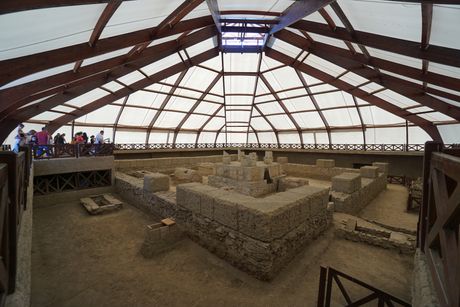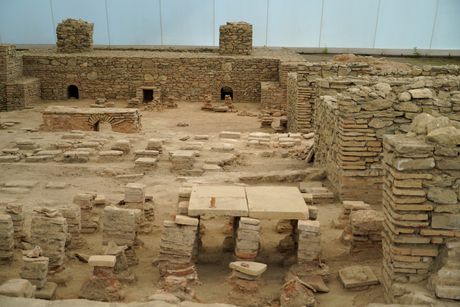New valuable discovery in Viminacium: HQ of Roman legion found, top man was sitting there

During this year's archaeological excavations in the Roman Viminacium site near Kostolac, eastern Serbia, of the Principium of the Legion's Castrum (command of the military camp), Principium VII of Claudius' Legion, i.e., the headquarters of this Roman legion, has now been located, said the Viminacium project manager, Miomir Korac.
In an official report published today, he stated that it is possible this was the office of an extremely important high-ranking official known from the writings of Notitio Dignutatum dating at the end of the 4th century under the title "Comes sacrarum largitionum," RTS writes.
There are more than 100 commands of Roman legions and they all lie under big cities, while money was also found at this site, which testifies to the great wealth of Roman military leaders.
In the previous few years, in the area of the castrum - the camp of a Roman legion, systematic geophysical surveys were carried out, which unequivocally confirmed the location of the building, and the orientation and distribution of the basic architectural elements.
The techniques used in the research of this project at this archaeological site in the vicinity of Kostolac are the proton magnetometer and the georadar.
Legion headquarters
The Principium or military command - the headquarters of a legion, is the central facility in each legionary camp and is located, as a rule, in the central part of the fortification, right next to the intersection of two main streets.
A Roman legion had about 5,500 legionaries, it was divided into 10 cohorts, each of which had 480 legionaries, while the 10th cohort was more numerous with up to 800 men.
The facility, which according to excavations and the results of geophysical surveys measures at least 70 x 50 meters, contains - officers' offices, armory, sanctuary, where the legion's treasury was kept, from which salaries were paid, as well as a room where flags and insignia were kept - the symbols of a legion, what was most sacred and most important to a Roman legionary.
The facility has a total area of more than 3,500 square meters, of which 800 square meters have been explored so far.

HQs in other legionary camps in the Roman Empire have been explored only in small parts, while researchers have now for the first time been given the opportunity to explore a principium in its entirety, it is stated in the official document by Dr. Korac.
Over 40 rooms located in the interior with listed functions were discovered, and the whole concept of this monumental building was similar to a forum in cities.
The Principium consists of a larger central courtyard with a peristyle, a military version of a city forum where soldiers and officers gathered during ceremonies and during meetings to plan military operations.
It is also possible that the Principium was destroyed during the Hun invasion of 441-443, and over the centuries the local population used stone and brick as free building material to build houses in the surrounding villages.
Legacy of Marcus Lelius Maximus
Several pillars found in the rooms around the central peristyle confirm the existence of colonnades.
As for the monument to the legate of the VII Claudius Legion, for now, the legacy of Marcus Lelius Maximus is known from epigraphic sources from Viminacium. He commanded the legion in Viminacium around year 195, and left behind two significant inscriptions.

One is dedicated to the goddess Diana, and the other is a list of origins of the soldiers of the VII Claudius Legion, which is one of the most important scientific sources for studying the structure of the legion and the manner of recruiting the legionnaires.
Video: A tomb has been discovered at the archaeological site Viminacium!
Video: Three lead sarcophaguses are discovered in Viminacium, containing remains of children and one baby
(Telegraf.rs)
Video: Slaven Došlo o mjuziklu "Balkan ekspres": To je priča o malim ljudima koji pokušavaju da prežive
Telegraf.rs zadržava sva prava nad sadržajem. Za preuzimanje sadržaja pogledajte uputstva na stranici Uslovi korišćenja.





